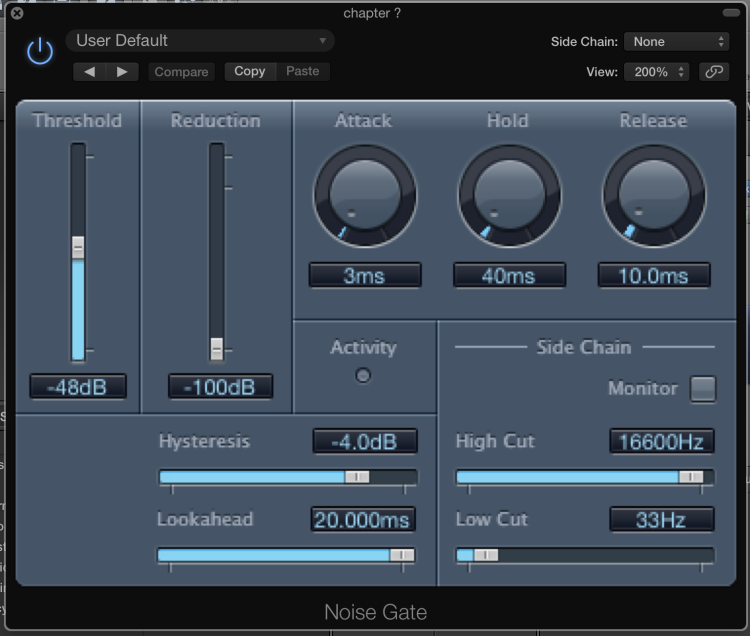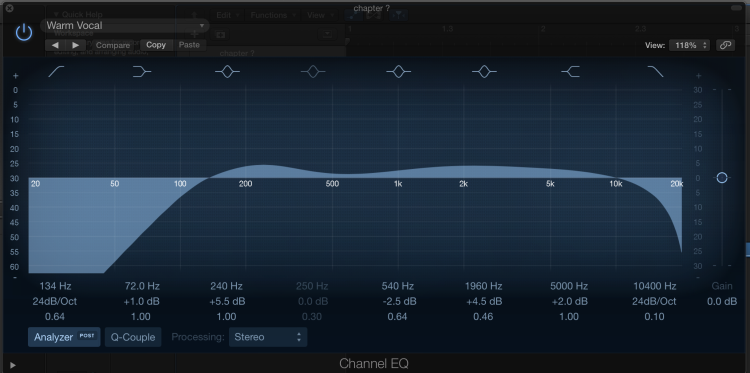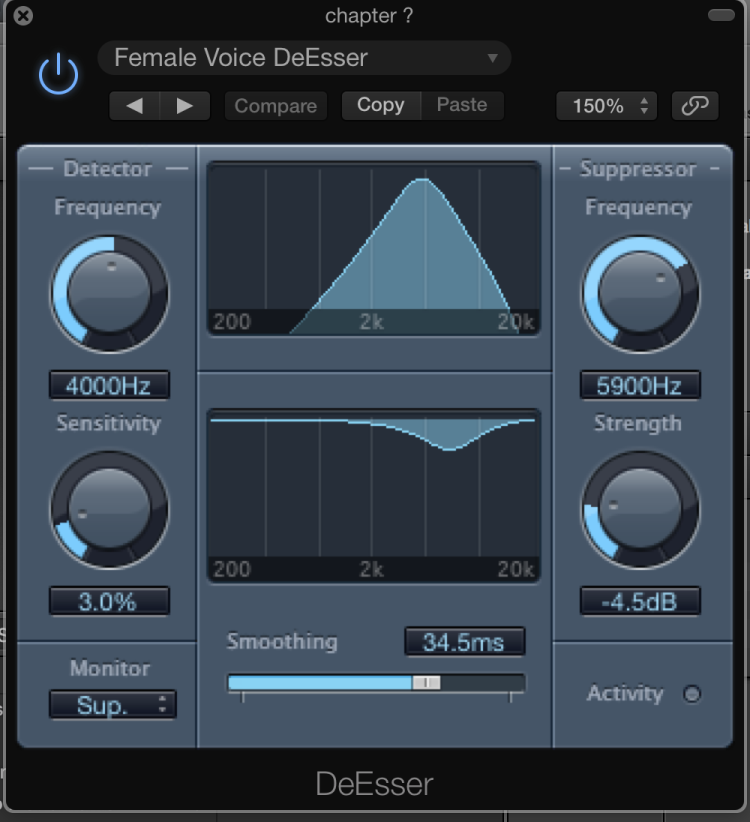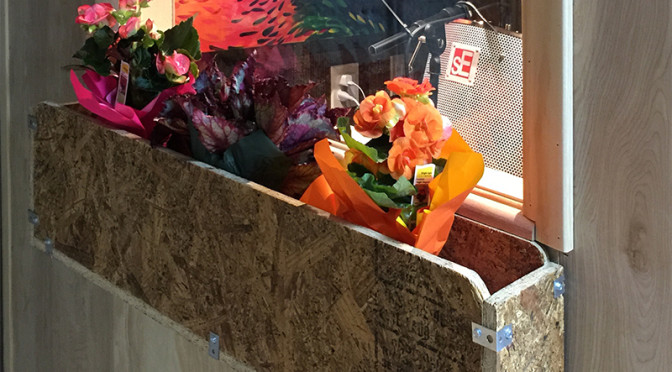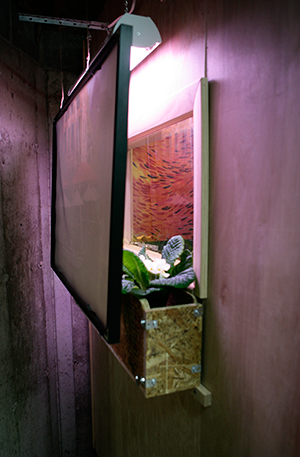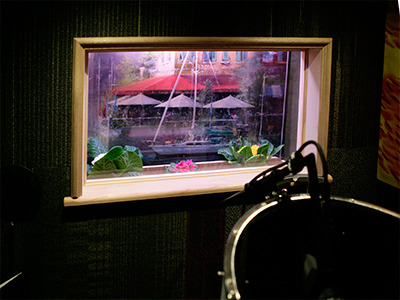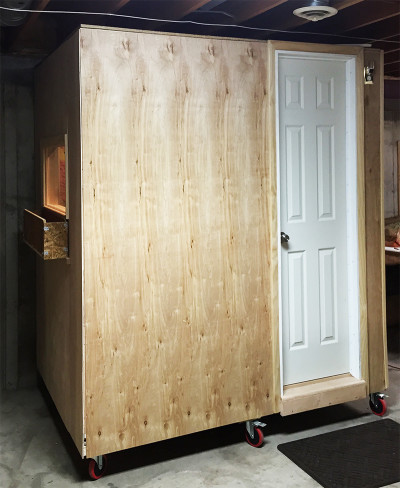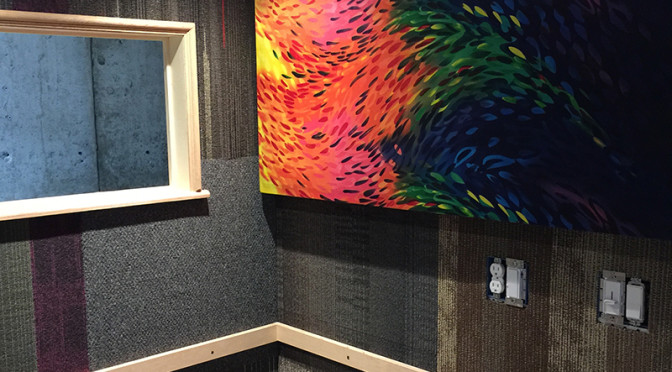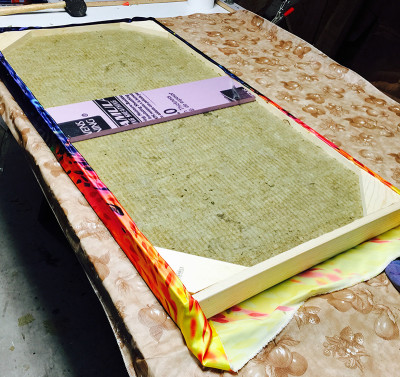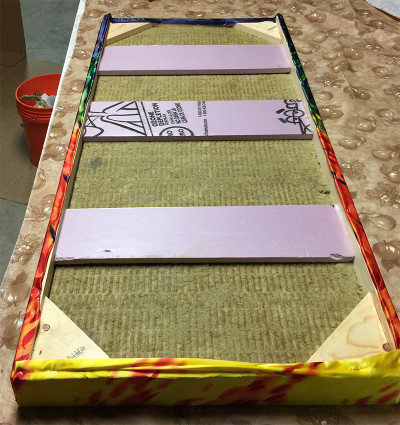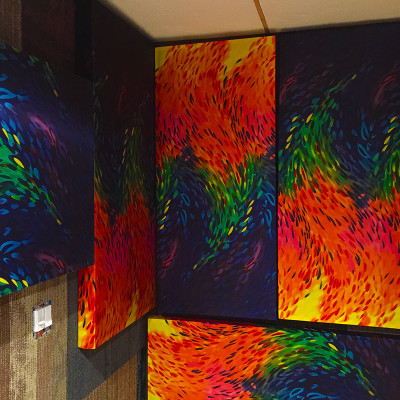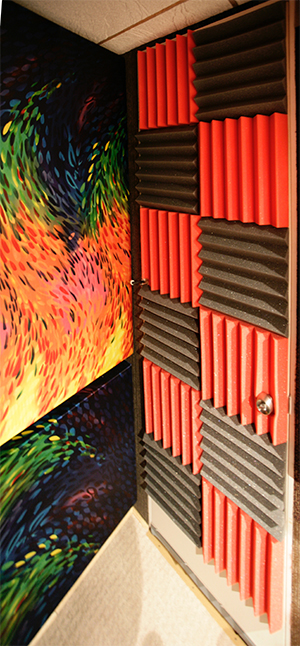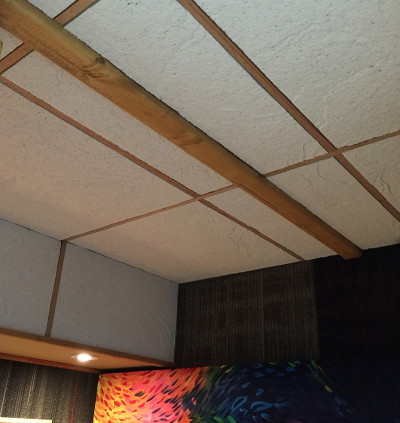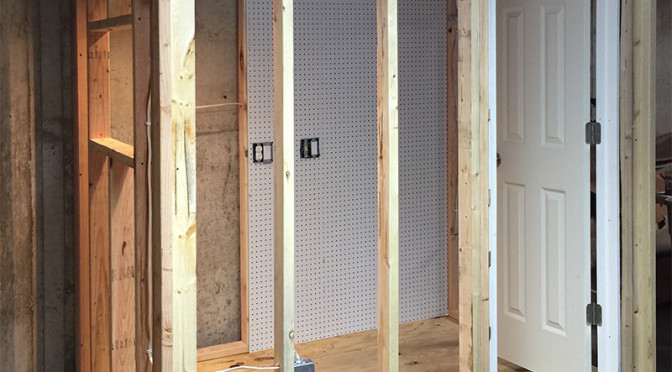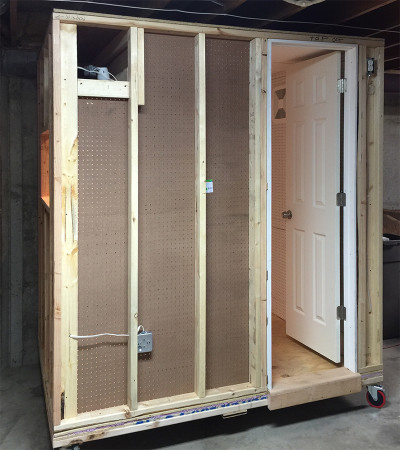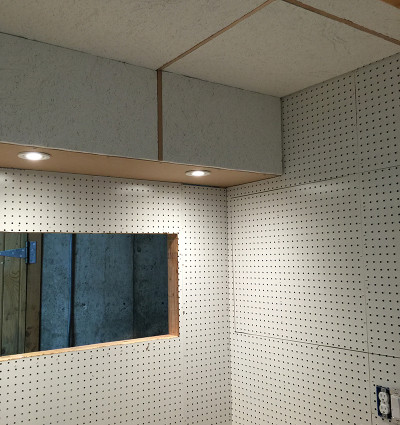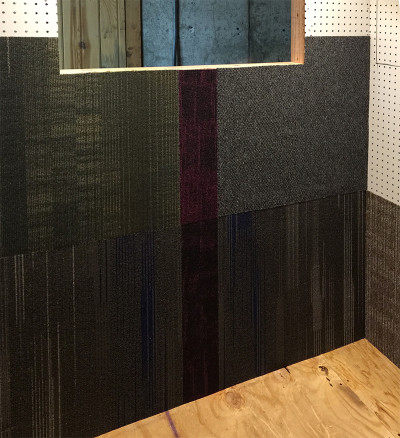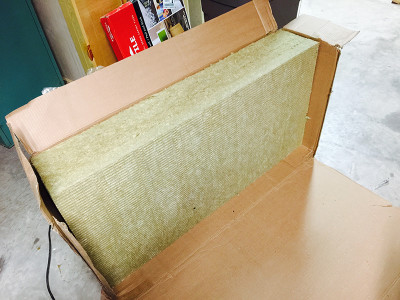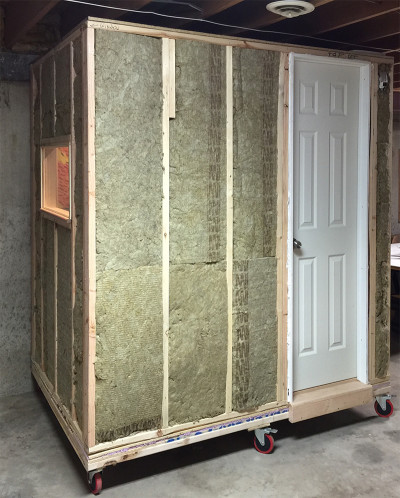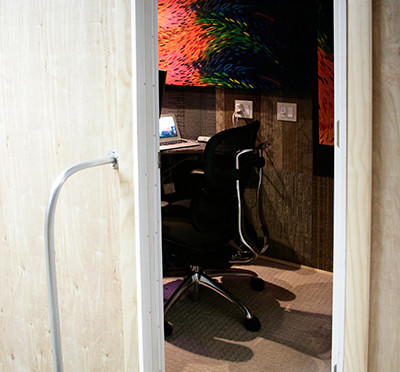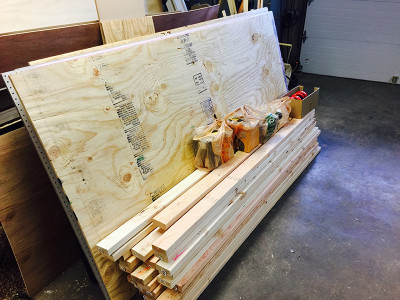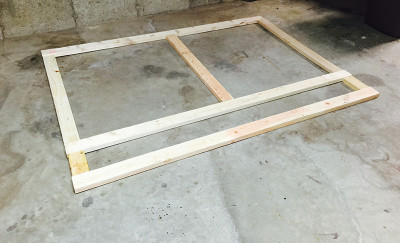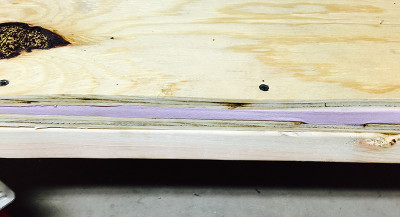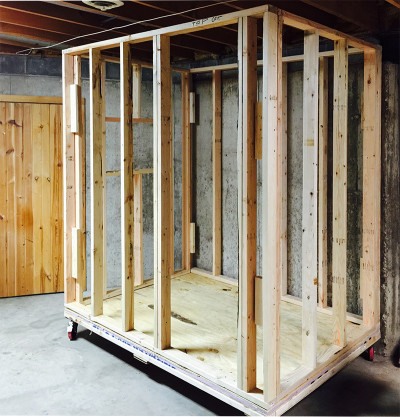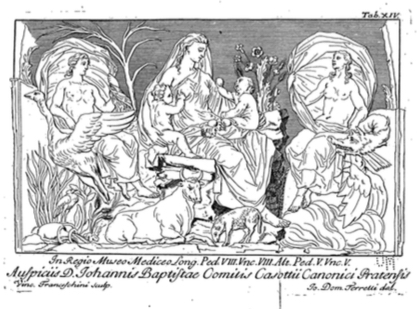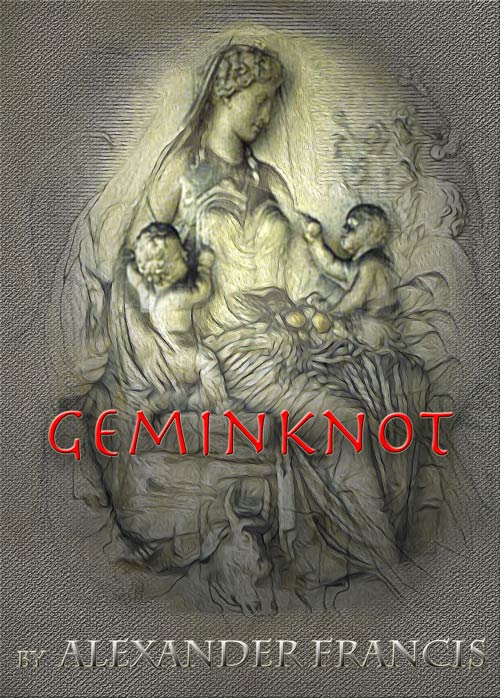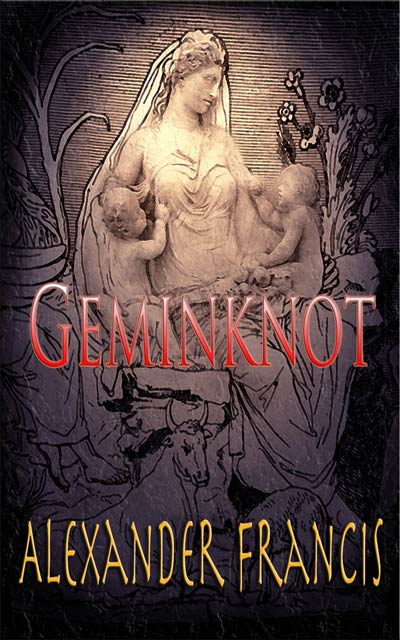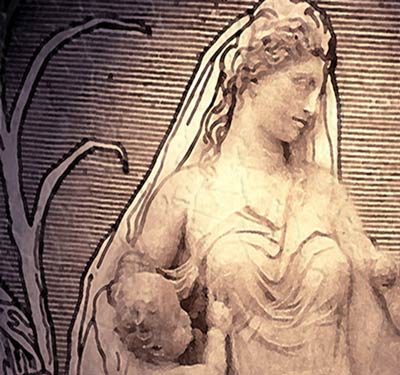The Fraidy Cat
It’s funny how comfortable an automobile’s back seat feels until you have to sit on it for hours. And, of course, there isn’t much to do back there but look around at the passing trees, wishing that, somehow, you could have just stayed home instead of traveling through the night until dawn while trying to be quiet so as to not distract or anger your father. It was not infrequent that too much activity or noise from my younger brother or me would impel his big arm to appear over the back of his seat, swinging around in an attempt to inflict some sort of punishing equilibrium. Any near miss, or worse, a direct hit on a leg or hand, would cause us to reconsider whatever activity had triggered the attack. The ensuing peace and quiet would last for a few miles before needing reinforcement. Mother would glare or threaten, Father would actually hit, and when he did, it was most effective.
For some reason, our family always left on a trip long before dawn, and we are talking two or three in the morning. It really didn’t matter that it made no difference what time we arrived, because my mother’s kinfolk graciously welcomed any visit at any hour. Nope. We were tradition bound, and tradition dictates that a trip should start in darkness…no matter what.
My father was obsessed with last minute repairs to the car before a trip. He was no master mechanic but usually and dependably would elect to perform at least a tune-up the day before. And he was picky about how the engine sounded with its new points, plugs and fresh oil. He would take it for a quick drive, intermittently punching his foot to the floor, the accelerator pedal trapped between, while listening carefully to how the motor revved and whether there was any of the dreaded “pinging” in play. Frankly, I could never hear what he heard, and after several stops to adjust the distributor, he would either assume that the car simply could not be fixed or accept its failings as the best he could manage given the limited time available. On occasion, the repair process would go on well after dark and long after I was ready to abandon all hope that the car would run correctly the next day. Lying on the dirt, bugs swarming the single light bulb mounted on a long extension cord, does not improve a mood, and it did little to bring good cheer to my father late in the night before an early family departure the next day.
Our car tires were another worrisome item of infamy. Something was always wrong with the tires. There was either too much wear, uneven wear, or, the worst possible thing other than a blowout…cupping. Cupping cannot be detected by a child of my age at the time nor can the particularly offensive thumping or droning noise be detected by any young ears. But my father could always see and hear cupping of his tires, and it nearly drove him crazy. Resorting to his bag of tricks to control the lethal cupping conundrum, he would drive various speeds, trying to find the perfect one that would minimize the thump that only he could hear. My mother was never convinced that it was an important issue, and most of the time, she would silently ride along nodding as he pointed out the vibrating effect a bad tire made on the steering wheel. On occasion, she would have enough and observe that the sound was not loud enough for her excellent ears to discern. After that comment, my father would keep his distress over cupping to himself, driving in sullen silence while the family car’s tires slowly wore themselves into little shreds left behind on the sunlit Georgia blacktop, at least in my father’s imagination.
Back in the days of my youth, children were not treated as equals to adults, not by a long shot. We were expected to do as told and do it quietly and to keep our invalid opinions to ourselves. Questioning the declarations or actions of a parent was not well tolerated in my family and, at the time, treating children in this manner was a nationally accepted method of parenting. Mind you, I’m not complaining, just observing and remembering how it was. Personally, I had little reason to complain, because they were happy when I wasn’t home and rarely asked where I had been or where I was going. It was personal freedom at its best as long as I didn’t generate complaints from neighbors or visits by officers of the law.
My father’s sense of humor was generally confined to certain television shows, and beyond that, his life was one of of hard labor and little comfort. One time though, I saw a different side of him, a playful, devious and inventive side, a face that I had never seen before then and seldom afterward. I had heard the stories of his youth many times, and cats and dogs were frequently mentioned. He was a cat fancier in some ways and had a profound understanding of their unique character. Such knowledge could only have come from close observation, prolonged study and frequent experimentation. My father knew cats inside and out.
One fine morning, about three and long before dawn, my brother and I were aroused and compelled to mount up. We all were going to Georgia for a visit and would stop at a diner for breakfast on the way. It was one of those rare dining out occasions, visiting a real restaurant that served food right to the table, even to my mother. There wasn’t anything unusual about the food, pancakes for the boys, ham and eggs for their parents, but it was one of those unique times that we actually dined out together, the trip nearly completed, the car repaired and functional, a day of visiting ahead. By the time we finished eating, we were all in a good mood, stuffed with food, our stiff legs stretched, relaxed and ready for the last half hour of driving to Aunt Thelma’s house. Of course, her husband Clarence lived there also, but since Thelma was the blood relation, it was always her house in our minds.
My mother’s aunt and uncle were older and country but welcoming in a way that was real with no artificiality. People of that type are incapable of putting on a face for visitors. They are what they are, and they like you for what you are, and there was no getting around it. When Thelma hugged you, you knew she did it out of love and nothing else, and whatever you were, she was proud of you for it. The couple had seen a lot of life, learned to cope with very little and yearned for nothing. My father was a competent tradesman but even he would listen to Clarence discuss how to do things and make things in his country way of practicality. Clarence had been raised on a farm and knew a world about animals and how to make do without the services of a veterinarian. From somewhere, Clarence had been given a black kitten, not an ordinary kitten but a dominant, mean, ferocious little beast that, after maturation, terrorized the neighborhood dogs and cats. Even Clarence gave him a wide berth, wisely considering the right time to attempt to pet or touch him. Thelma ignored the creature, and in return, Blackie ignored her. He had run of the house, run of the yard and ruled the neighborhood. Something had to be done about Blackie and his innate hostility. The obvious solution was castration. The process was well-known to Clarence who had performed the deed on various large animals. He favored the rather simple ligature and snip procedure, and the addition of anesthesia apparently had never occurred to him as necessary. Completing this task on a tolerant herbivore confined in a tight stall was one thing, but surgery on a violent-natured cat was….one would assume, impossible. Not for Clarence. Using a combination of trickery and brute force, Clarence managed to stuff Blackie head first into an old leather boot, leaving the rear end exposed and vulnerable. After the job was completed, Blackie wasn’t seen for days, leaving Thelma and Clarence to speculate about his surviving castration.
Unfortunately, Blackie did return. His mood had not improved a bit. In fact, he was far worse and now given to random attacks consisting of biting and clawing anyone at anytime as a matter of right. Any caressing or petting by Clarence was a thing of the past. Blackie was free to come and go as he pleased. I often wondered why Clarence didn’t attempt to do away with Blackie, but as the years came and went, I realized that Clarence was a good and kind man who probably felt a great deal of responsibility of how Blackie turned out. He had enough on his conscience without adding caticide to his regrets.
And so, we arrived in Georgia at the home of Thelma and Clarence one fine summer day, tired from traveling most of the night but at least well-fed. Thelma took her hostess responsibility seriously and, as should have been expected, insisted on feeding us again, no matter how resolutely we rejected the idea. As we were sitting, talking and listlessly eating our mandatory cupcakes with tea, Blackie strolled through the living room. Our conversation suspended in mid-sentence as the shadowy black cat strode defiantly in, his long tail swinging from side to side in an aggressive display. Blackie didn’t look directly at any of us, as far as we could tell, but just stood there for a moment, obviously itching to start a fight before he sauntered off without looking back.
“New cat?” my father inquired. He, above all the others, would have had a sixth sense about Blackie and his potential.
“His name is Blackie,” Clarence spoke the obvious. “Don’t try to pet him,” he added, also the obvious, even to me.
It was a bit unsettling, the appearance of this wild creature who invited confrontation. I filed the information away for later use as conversation came back as before. Mostly, they talked about relatives, where they were, what they were doing and, at times, when they had died and what they had left behind. My brother and I were sitting there in silence, trying to escape notice as much as possible. Clarence, when he was motivated by fresh ears such as my father’s, could manage to talk non-stop. It didn’t matter in the least that my mother and Thelma were engaged in a conversation only two feet away. There were stories to be told, lessons to be learned, and Clarence went at it with his back into it. My father usually just sat there nodding, occasionally rubbing his chin with his hand and casting his eyes about the room, probably thinking about something else entirely.
In a moment of absolute boredom, I pulled out my pocket knife and entertained myself with the opening and closing of the blade. It was a discard from my father’s pocket and sported a broken plate on the left side. Nevertheless, it was a knife and with a bit of oil and persistence, it would open and close like new. The blade was another matter. My mother despised sharp blades in the hands of young boys and took it as her sacred duty to correct my father’s judgement in passing this weapon into my hands. She took it from me and in a few vigorous minutes of work, managed to not only dull the cutting edge but to remove the tip as well by drawing it over concrete found on the front stoop. It was, more or less, rendered into a butter knife which opened and closed. To injure someone, it would have to be fired from a cannon toward them. She watched for any attempt at sharpening by me, and if it would even scratch her finger, she resolutely repeated her dulling routine. Clarence finally spotted the knife in my hand and stopped his conversation abruptly.
“Say, Junior, looks like your knife needs some attention,” he correctly observed. “Remind me later, and I’ll show you how to sharpen it.” With that, he went back to his conversation about the German POW camp that had not been far out of town. I knew that Clarence would remember and that my knife would be restored to a precision tool, capable of both shaving and sticking. Then I noticed my mother’s eyes looking my way. Clarence would be wasting his time and effort. I sighed and folded the blade, putting it back in my pocket, while hoping that everyone would just forget that it was there. That was when Blackie made another appearance, this time from another direction.
He moved silently to the middle of the room and looked at each of us in turn. It was a dare that none of us chose to accept, and we looked back hoping for his voluntary retreat. That is, all of us except my father. He had fought in the World War and was tough and street-smart himself. That, and he could read cats in a way that even the cat didn’t understand. I guess, during a momentary return to his youth, he decided to take Blackie’s measure and do it while appearing innocent to the rest of us. My attention was drawn to my father’s face when the idea struck him. I knew him well enough to realize that Blackie was going to be sorry that he was itching for a fight on this particular day. The first stroke came just as Blackie was nearly out of the room, having decided that he was still master of the house and all its contents.
From somewhere low in the bowels of the earth, and too low to be noticed by most humans, a groan appeared. Blackie stopped and the hair on his back elevated slightly. His head turned to look for a threat, but the humans were engaged in boring conversation and otherwise were ignoring him. Still, the threat had arisen in this room, and Blackie was compelled by his nature not to ignore it. He turned around and stared, safely in the doorway and yet close enough to either fight or flee. I learned something about cat nature that day. They are cursed with a nervous energy that can take charge at any time, making the creature a victim of his own reflexes. Blackie stood there waiting but nothing happened. My father was innocently listening to Clarence drone on and not even looking Blackie’s way. I knew that whatever was going to happen was still on the way, and I considered that Blackie understood where the sound had arisen but not why. When Blackie was still under full alert, he turned to leave, and at the perfect moment, my father’s foot jerked just enough to make a sound, accompanied by a nearly inaudible menacing gurgle. Clarence didn’t notice, Mother didn’t notice, but Blackie did and the sound effects were enough to cause him to clear the ground by a couple of inches. This time his back hair came up all the way to his tail and stayed up.
“Clarence!” Thelma called out. “What in the heaven is wrong with that cat?” Dutifully, Clarence turned his attention to Blackie who stood there with his back arched, displaying dilation of his pupils. He studied the cat for a moment, shrugged, and continued his explanation of fishing in the Okefenokee to my father who sat there in complete innocence, giving Clarence his full concentration. The cat knew exactly who had made the noise and was looking right at him, still attempting to determine the actual threat level. As I watched, my father’s head robotically turned toward Blackie, and his eyes rolled around while wide open, giving even me a start. Blackie couldn’t take it. His entire life had revolved around conventional confrontations…not this surreal kind. He didn’t have a defense strategy for insanity, and his only options were to become stiff legged and hiss loudly at the threat.
“Clarence!” Thelma repeated, this time louder, while pointing at the cat with her arm and hand. Blackie had morphed into some sort of creature with advanced rigor mortis, even though he still stood his ground in a way, but teetering on his claws instead of the pads of his feet.
Clarence tossed a pillow at the pitiful creature, commanding “Git!” Blackie, with a flip of whatever buried reflex was still functioning, disappeared in a blur of motion.
I studied the doorway expecting the return of Clarence’s creature at any moment, but to my disappointment, he had evidently deduced that the room was too upsetting for him. Clarence droned on, and I started listening to Thelma and my mother discuss the hard times of the Depression. I felt myself being transported back in time to rural Georgia, hard red clay, acre miles of cotton shimmering in the hot sun, the local Coca Cola plant and the numberless unfortunate blacks who did backbreaking labor for nearly nothing. And the most special were the little snippets about my mother’s grandparents who took her and her three siblings in and did the best they could for them. Once I remembered the little fragments of history I had previously heard, and inserted them as filler for the memories they were recalling, I felt as though I had lived there with them, experienced the same bruising reality, and had cried the same wrenching tears when my great-grandfather died, leaving them to fend for themselves in a hard world. A glance at my younger brother told me that he had been able to completely tune out the conversations, instead focusing on the stack of funny books he had wisely managed to bring along. In a way, I envied him and his ability to shut off the world, retreating into his own imagination, allowing in only what he wanted, rejecting the rest.
Blackie’s head appeared at the lower corner of the doorway. He was cautious this time and not so ready to take on the newcomers. I couldn’t decide if some cat necessity had driven him to take a stroll through the room again or if he had to prove himself to himself. Either way, I had to admire his willingness to overcome his fright and try again. My father’s eye flicked toward Blackie. He had been waiting, expecting Blackie to return. How he knew, I’ll never understand, but Blackie would have been wiser to visit the neighborhood instead of this den of self-inflicted horror.
What you have to understand is that Blackie knew, absolutely was positive, that my father was going to give another unexpected jerk or roll of his eyes. Blackie was ready this time, and that was his problem. He was hyper-alert, his nervous system in high tune, his muscles already tensed…he expected to be surprised and that was the masterstroke in my father’s method. The cat was trapped, the inevitable was about to be evitable.
After a long moment of contemplation, Blackie made his appearance. Acting casual and relaxed, he boldly walked in, sauntering a line that would lead him to the other doorway on the other wall. His stiff and swinging tail was a dead giveaway, though, and even I could tell that Blackie was on maximum alert. About midway, and while Blackie was obviously thinking that he was going to make it out unscathed this time, my father started emitting a subsonic growl, one just loud enough for the cat to hear but not loud enough to stop Clarence from describing how he made the infamous mahogany teller’s window at the bank. Blackie’s head pivoted toward my father, like the snap of a whip, his eyes fixated on my father’s face which slowly displayed teeth and narrowed eyes. Some part of Blackie had to know it was coming and that he had asked for it and had no one else to blame but himself. Reasoning wasn’t enough to overcome reflexes, however, and Blackie went up on his toes with all four feet, legs stiff, tail bristling with hair, as he danced in crazy circles intermittently spitting a hiss between his frozen jaws. During full dance, the second stroke came when my father expertly jerked both feet at the same time. Blackie went straight up in the air, but how, I can’t imagine. It was as if an unseen force of levitation had arrived from the heavens and lifted him instantly into the thin air. After landing stiffly, and showing twenty or so teeth, he danced on toes and claws slowly out of sight, back where he had come from.
Thelma stood up, looking at the vacant doorway. “I wish you’d listen!” she said, her favorite remark when something was truly remarkable. “Clarence, did you see what Blackie just did?” Without waiting for her husband’s view of the matter, she added, “Get up and go shoo him outside.” It was not a request that Clarence could ignore, and he rose to the occasion and headed toward where Blackie had been last seen.
Blackie had other ideas, however, and after Clarence had been gone for a few moments, a black streak crossed the room, disappearing into another area of the house. The motion was too quick to actually observe and left me with the impression of a shadow flicking past, an apparition of sorts. Blackie wasn’t ready to be dismissed from this confrontation just yet. He, as the dominate cat of cats, had something left to prove. A motion caught my eye from the dark corner where the shadow had vanished. Inspection showed it to be the right ear and eye of a black cat attempting to inspect the room from a safe distance using a method of subterfuge well-known to members of the feline family. I glanced at my father and could see his eyes sparkling with delight and mirth. The cat just couldn’t take a hint. He had chosen a master of the dark arts to tangle with, an individual who had understood cat physiology by intense observation for years before Blackie’s birth.
“Come, Blackie,” Clarence commanded from somewhere distant. A cat ear twisted in that direction, but the rest of the cat was reluctant to follow. Blackie had chosen to be forced to cross the no-cat zone and found himself on the far side of the only escape route, while being aware what awaited him, causing his reflexes to fire off before he was ready. Without my father moving a muscle, or uttering a sound, or even looking menacing in any way, it was simply his presence in the room that was threatening. The demon existed, he was there waiting, and Blackie had to cross his path. What we witnessed will live in our memories for all time and will bring guffaws, smiles and head-shaking each time we think of Blackie crossing the room that last time. My side-splitting laughter brought on tears which clouded my vision, but I can still describe the scene just as it happened.
Blackie, stiffly, puppet-like, danced into the room on four stiff legs, his back arched, his eyes flaming yellow, his teeth showing but his vision and head were fixed on only one thing…my father’s face. He couldn’t make much forward progress by hopping forward one inch at a time, but honestly, it was the best the poor animal could do at the moment. He hopped, he spat, he glared, and at long last, his savior appeared with a broom above his head, rushing toward him with menace from the opposite doorway. The last we saw of Blackie was a puff of hair as the broom Clarence swung at him made contact. Then he was gone.
Alexander Francis

